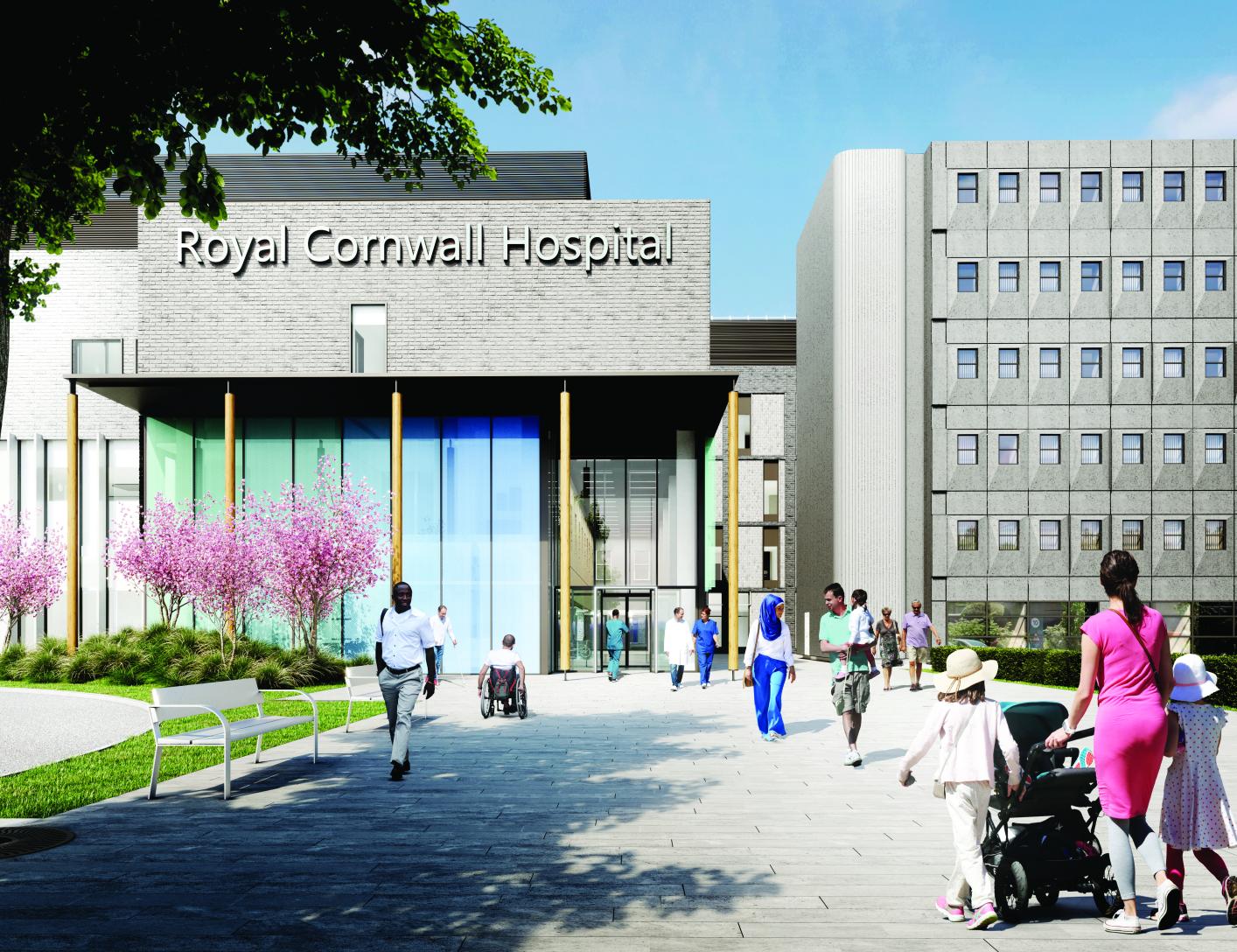Feature / Royal standard
The Royal Cornwall Hospitals NHS Trust’s new women and children’s hospital has been planned for a long time and was originally allocated some funding as part of the sustainability and transformation partnership wave 3 programme. Having been aligned with funding from the health infrastructure plan, the scheme has now transitioned into one of the new hospital programme (NHP) schemes.

As a cohort 2 scheme, it is already well advanced, with formal Treasury approval for the outline business case (OBC) received in October, following approval from the NHS England/Department of Health and Social Care joint investment committee (JIC) in February 2023.
One challenge in moving from JIC to ministerial and Treasury approval was ensuring the scheme was in line with the standardised design elements promoted through Hospital 2.0. When this requirement was clarified as part of May’s NHP reset, it was not initially clear what impact this would have on an already well-developed design at OBC stage (see artist's impression).
Waiting for the full Hospital 2.0 design standards, expected in spring 2024, would have been a major setback for the programme both in completion timeline and financially. However, working with NHP and using an updated Hospital 2.0 toolkit has enabled the trust to demonstrate sufficient compliance, with a focus on the level of modern methods of construction (MMC) employed in the main build to meet the standards.
While all other fundamental criteria had already been met, the submitted OBC had 69% MMC, just short of the target of 70%.
More MMC techniques and work practices have subsequently been included to take the scheme over the required threshold and now up to 75%. This led to the subsequent ministerial and Treasury approval for the OBC in the autumn, which means the trust can now focus on its full business case (FBC). It expects to have this completed by the end of 2024.
The trust continues to target a 2028 opening date, although the timelines for the programme are being evaluated with the support of NHP.
However, substantial enabling works within the total scheme cost of £291m are already under way. These involve creating new car parking spaces as part of planning requirements, upgrading the site electrical infrastructure, relocating oxygen supplies, building a new £30m pathology facility and key logistical moves of services situated in the footprint of the new facility.
The new hospital will link an existing 1970s tower block and a lower-level more modern wing. It will also provide a new entrance to the hospital. Chief finance officer Karl Simkins says this integration with existing buildings limits the level of standardised modular build that could be incorporated.
‘However, our aim is to incorporate as many of the Hospital 2.0 standards into the final design as possible, certainly exceeding the minimum standards required, and including a fully digitised building,’ he says.
Cost escalation risk
A major concern for all trusts within the programme is cost escalation. The funds allocated to individual projects do not historically flex if inflation turns out to be higher than included in project assumptions. And inflation in general – and construction inflation in particular – has been rising steeply in recent times.
All projects will allow for contingencies, but there is a real concern about what inflation could do to costs before prices are locked in with contractors within the ProCure P22/P23 procurement framework arrangements.
There is precious little flexibility. Mr Simkins says it is hard to see how local capital resources could fill any significant gap in funding due to escalating costs.
‘The Cornwall and Isles of Scilly system is currently allocated annually about £23m of core capital, with the bulk of this coming to the two NHS providers in the system,’ he says.
‘Using this resource to address a financial risk on the new build would have a material impact on our ability to meet our core capital priorities, including high-cost medical infrastructure such as imaging infrastructure, backlog maintenance capital and medical equipment obligations. There is limited local capital resource to support inflationary risk on the wider hospital infrastructure programmes, including the women’s and children’s scheme.’
That would leave few options other than downsizing the planned hospital, although the trust has already removed some elements of the project as part of the OBC.
The tight financial situation in the NHS – particularly around capital – makes delivery of the planned savings from the Hospital 2.0 approach all the more important.
Related content
This forum will bring together national updates, topical issues, best practice examples and networking opportunities.
This conference will keep all those involved with NHS charities up to date with any changes to practices and procedures.